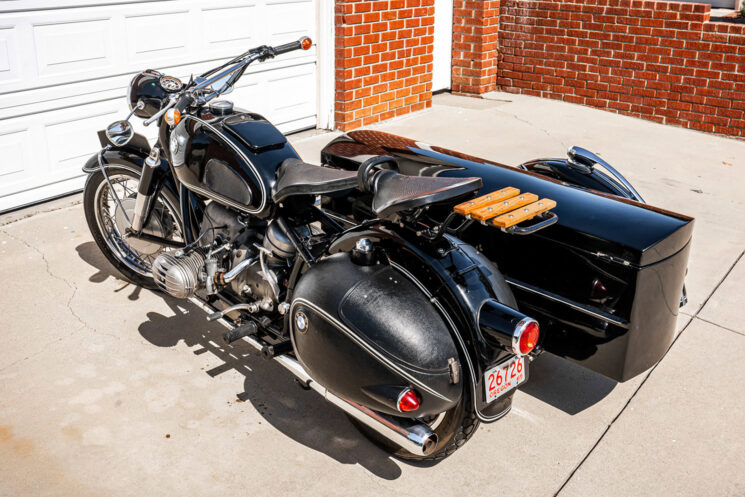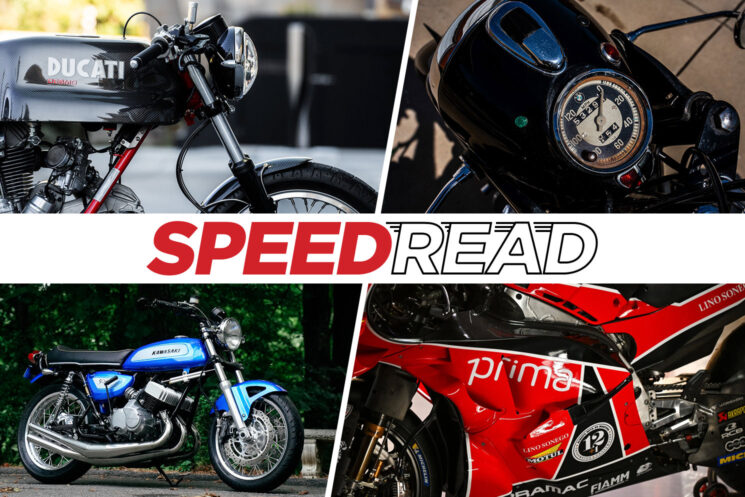
We’ve cast the net wide this week, with a selection of tasty motorcycles that are worlds apart. Purpose Built Moto kicks us off with a slick Ducati 900SS café racer, then we look at a stunning Kawasaki H1 Mark III restomod from the USA. Our fastest candidates are this week’s 75th anniversary MotoGP bikes, and our slowest is a 1965 BMW R60/2 with a very peculiar sidecar rig.
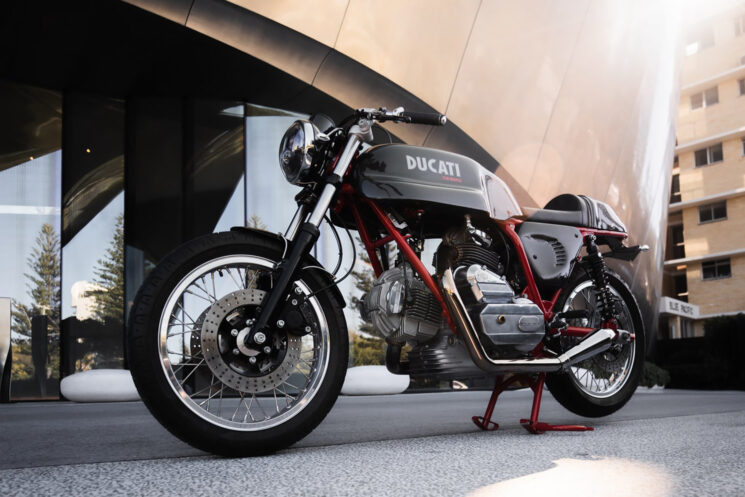
Ducati 900SS by Purpose Built Moto Our friends at Purpose Built Moto in Gold Coast, Australia have built plenty of ground-up custom bikes, but they’re not opposed to taking on smaller jobs too. The owner of this Ducati 900SS café racer brought the bike in with a solid set of mods as a foundation—but needed Tom Gilroy and his team to take it over the finish line.
Although the Ducati looks like a modified 900SS, it’s technically a replica. Since it came to the shop with most of the cosmetic and engine work done, Tom’s not entirely sure what the donor bike was—but the numbers indicate that it might have started life as a Darmah.

The shop that had worked on it previously had already treated it to a carbon fiber body kit, a bright red frame, rebuilt 18” wheels, and a fully rebuilt motor. PBM was tasked with adding a custom exhaust and front fender, finishing off the lighting, and rewiring the bike from head to toe. While they were at it, they nipped and tucked a couple of things to tighten up the overall package.
Tom’s not exactly sure what’s happening inside the engine, but he can confirm that it runs with Mikuni carbs and a new ignition system. From there, PBM fabricated a pair of two-into-two headers that trace the engine cases before terminating in a pair of stainless steel mufflers. (The barely-visible silencer mounts are particularly neat.)
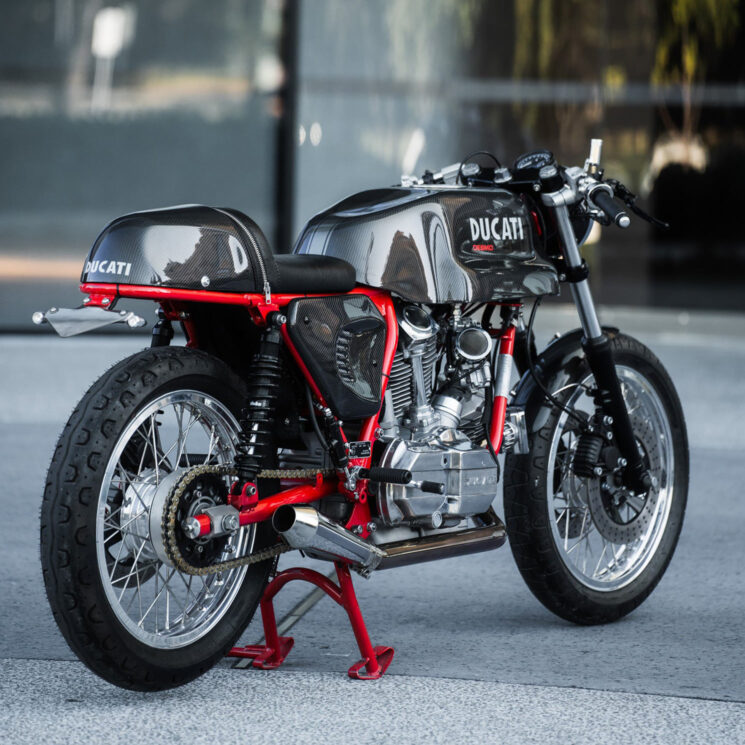
Wiring is a dark art (and a chore), but it’s something that’s core to PBM’s business. The Ducati 900SS was given a full rewire, with the shop’s own ‘Black Box’ unit at the heart of the new system. Everything’s been tucked away carefully; the horn, ignition, and coils are under the fuel tank, and the Black Box sits under the seat hump.
Moving to the bodywork, PBM tweaked the subframe and tail unit for a more compact fit, before finishing the rear loop off with a custom tail tidy setup. PBM turn signal and taillight combination LEDs flank the license plate mount.
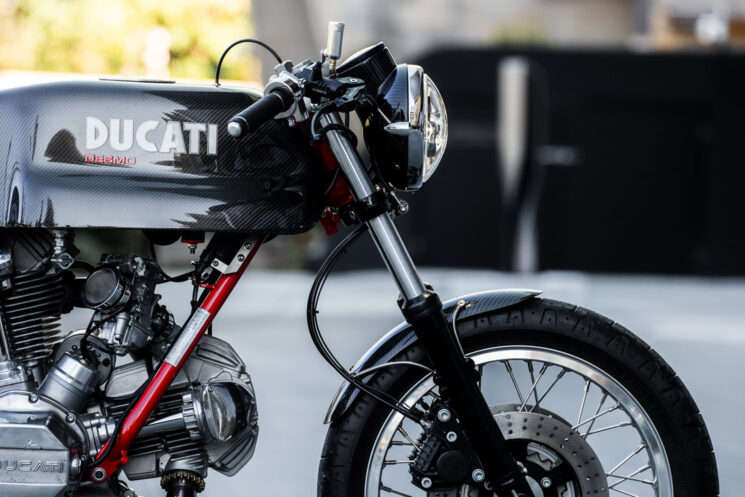
At the opposite end of the bike, the crew took an aftermarket carbon fiber front fender designed for a Harley, trimmed it, and set it on bespoke fairing stays. Higher up, they repurposed an old headlight bucket to build an all-in-one housing for a PBM LED headlight and the speedo, and then had it wrapped in carbon fiber. The headlight, front turn signals, and neat push buttons that adorn the Tarozzi clip-ons are all PBM parts.
Tom and his crew might not have started this project, but they finished it in style. And as anyone who’s ever built a custom motorcycle will tell you, the last yards of a project are often the hardest. [Source | Via]
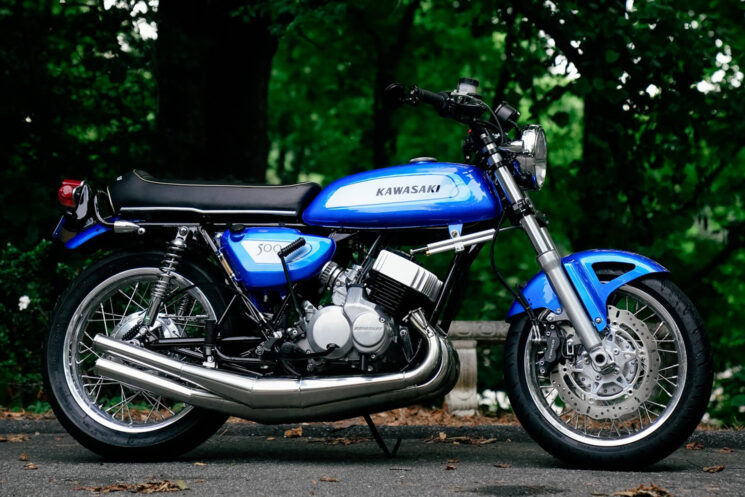
Kawasaki H1 Mach III restomod by Atlanta Motorcycle Works The Kawasaki H1 Mach III needs little introduction. A veritable banshee on two wheels, the 500 cc triple-cylinder two-stroke was a hit—sketchy handling and all. Over half a century later, it’s a bonafide icon.
This crisp 1971 Kawasaki H1 Mach III restomod from Atlanta Motorcycle Works in the USA is notable for a few reasons. It came to the shop in boxes—an unfinished project undertaken by their client’s late father. By the time AMW was done with it, it had been upgraded in every conceivable way.
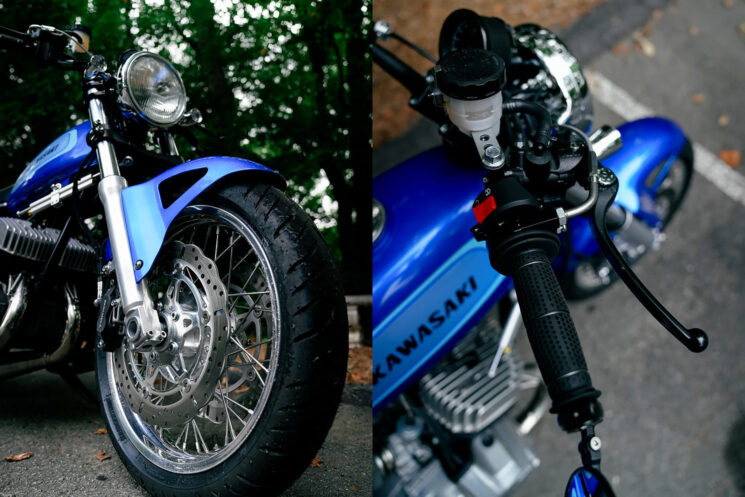
Piecing the H1 together involved rebuilding its motor with custom-ported billet heads, bored cylinders, new pistons from Wossner, and a rebuilt and balanced crankshaft. AMW also added a bank of Mikuni VM34 carbs, and a three-into-three Higgspeed exhaust system. The electrical system was overhauled too, with a fresh wiring harness built around a NWT Cycletronic hub.
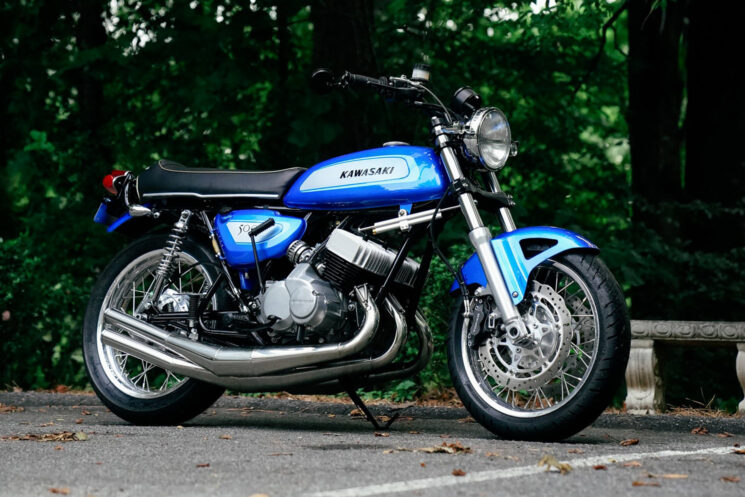
Next, AMW focused on bringing the notoriously twitchy H1’s handling up to modern standards. The bike’s new forks and twin front brakes are from a mid-90s Suzuki GSX-R, while 17” Excel rims are wrapped in new Bridgestone road touring tires. A steering stabilizer adds peace of mind, with a reinforced swingarm doing duty out back.
Other additions include new grips, bar-end mirrors, and a Koso speedo. A blue pearl paint job ties it all together, complete with factory graphics. Atlanta Motorcycle Works didn’t just rebuild this legendary two-stroke—they elevated it. [Source]
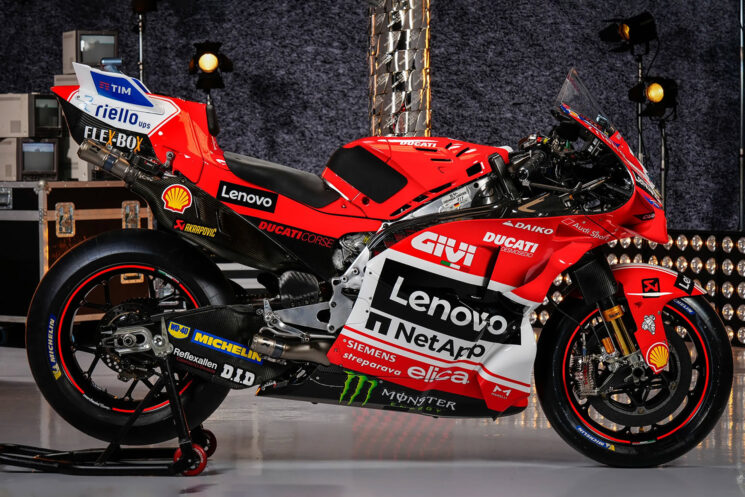
Classic MotoGP liveries at Silverstone Today’s MotoGP race at Silverstone in the UK marked the 75th birthday of motorcycle Grand Prix racing. To celebrate the occasion, all of the premier class MotoGP teams wrapped their bikes in special one-off liveries, paying tributes to the bikes and riders of yesteryear.
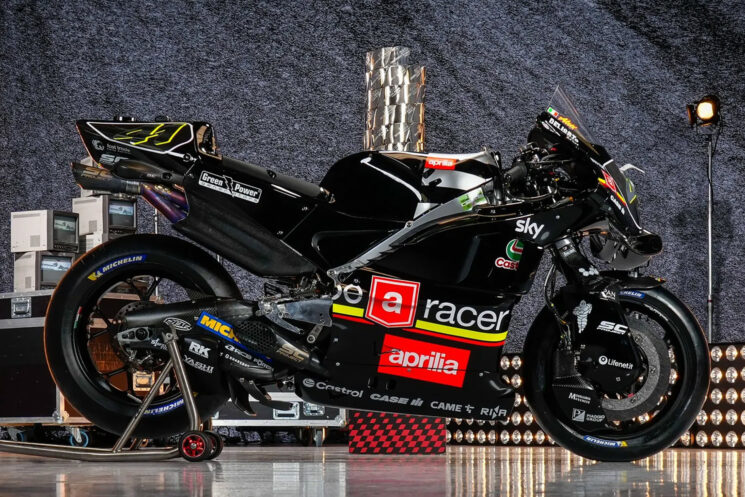
The factory Ducati team’s 75th-anniversary design was a simple red and white affair with a brighter red than their current design; a nod to Loris Capirossi and Troy Bayliss’ 2003 Marlboro-sponsored Ducati.
Yamaha hit their bike with the white and red design that adorned their race bikes through the 60s and 70s, while the VR46 team looked to Valentino Rossi’s iconic ‘sun and moon’ design. Aprilia [above] opted for a sharp black paint job with minimal graphics; a nod to Max Biaggi’s 1994, 1995, and 1996 250 cc title-winning Aprilia RSV 250.

A handful of the day’s bikes stood head and shoulders above the rest though—like the KTM RC16 [above]. Although the RC16’s special edition livery wasn’t a direct replica, it was loosely based on the KTM LC4 that KTM’s current VP of Road Racing Technology, Wolfgang Felber, won the German ‘Sound of Singles’ championship on in 1989. Regardless of its origins, the stark colors and crisp, bold graphics are a cut above KTM’s regular RC16 livery.

The best-looking bikes on the grid, hands down, were the Gresini Ducatis [above] ridden by the Marquez brothers. In an emotional tribute to Gresini’s late founder, Fausto Gresini, the bikes wore the minimalistic ‘il Tricolore’ design as the Garelli bike that he won the 1985 and 1987 125 cc titles with. Simple, but iconic.
Also notable was the Primi Pramac Ducati GP24 [below] that Jorge Martin put on the second step of the podium, while also regaining his lead in the 2024 championship standings.
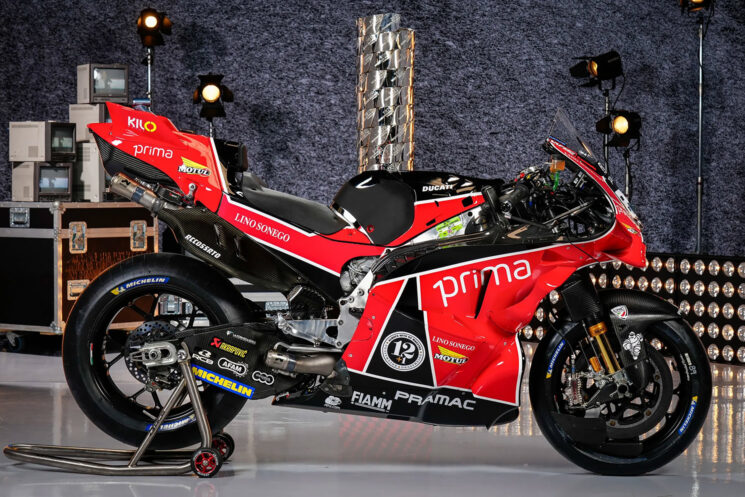
Slathered in chunky red and black graphics, it paid homage to the legendary Spanish racer Ángel Nieto—specifically the Garelli that he won the 1983 125 cc championship with. (Ángel was also the uncle of Primi Pramac Racing’s current sporting director, Fonsi Nieto.)
The temporary redesign was a breath of fresh air, with Pecco Bagnaia even quipping after the race that he preferred today’s livery to his Ducati GP24’s regular dress. But it has us wondering why MotoGP bikes can’t always look this good. [Source]
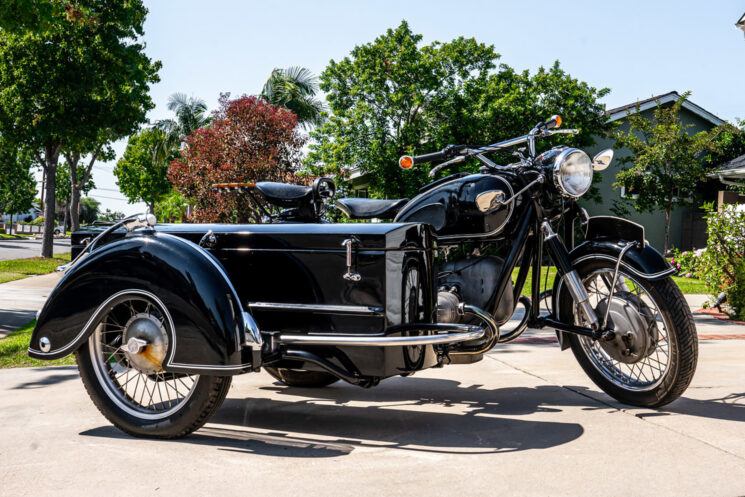
For sale: A 1965 BMW R60/2 with a Steib transport sidecar 1960s BMW boxers and Steib sidecars go together like peas and carrots—but have you ever seen an old Beemer with a Steib delivery sidecar? Us neither.
At first, we thought we were looking at the world’s most stylish custom-built hearse. But as it turns out, the famed German sidecar manufacturer did in fact produce a sidecar designed for transporting things rather than people.

It was officially called the ‘LT200 transport sidecar,’ and it was built on the same base as the company’s LS200 passenger sidecar.
Measuring 146 cm [57.5”] long, 40 cm [15.7”] wide, and 50 cm [19.7”] deep, the LT200 could carry up to 120 kilos [265 lbs] of goods. This one’s lined in black walnut and features a lockable lid.
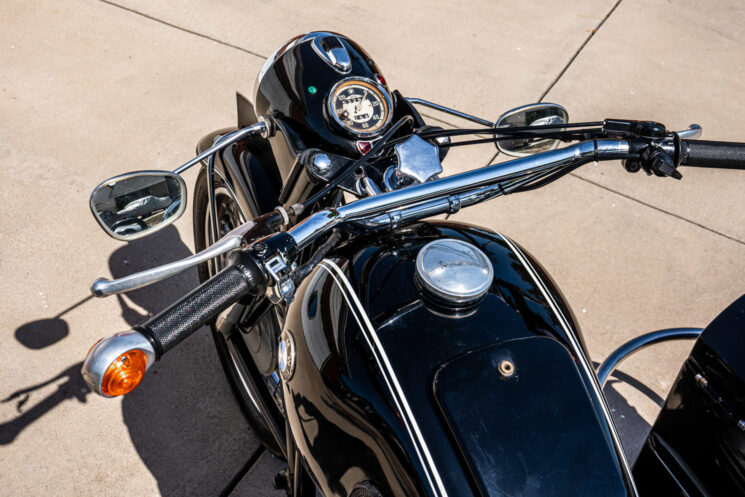
Of course, the motorcycle it’s attached to is nothing to be scoffed at either. The BMW R60/2 had all the goodies back in the day; a 30 hp motor, Earles forks, and a shaft drive. This one still has matching Denfeld seats and has been outfitted with BMW saddlebags, a larger ‘sport’ tank with a toolbox compartment, Albert mirrors, and genuine Hella bar-end turn signals.
If that sounds like your bulk order of tea, Iconic Motorbikes currently has this vintage oddity, which is presently located in California, listed for just $19,260. This leaves only one question: what would you cart around in it?
